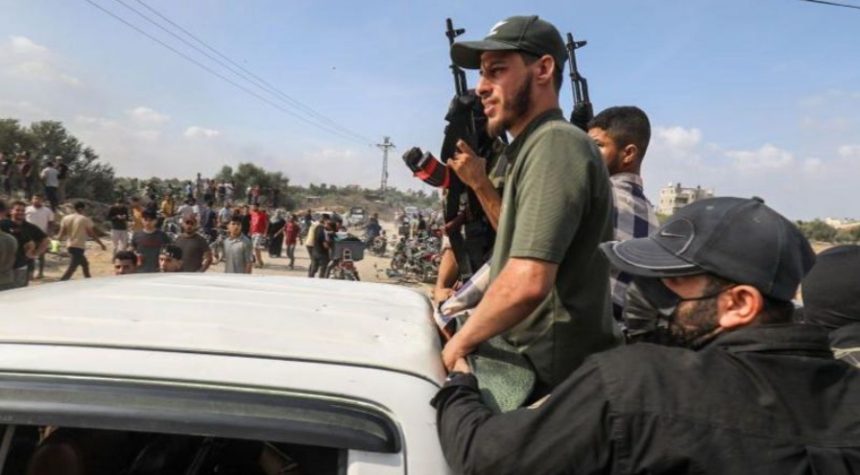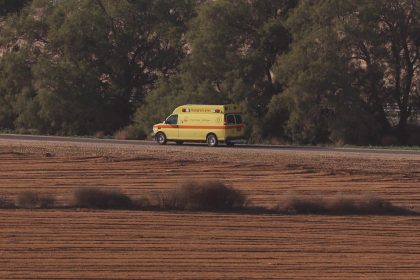Israel Awakens to Unprecedented Attack from Gaza
Early Saturday morning, while many Israelis were still asleep, a coordinated and large-scale attack began. It was the Jewish Sabbath, a sacred holiday when families gather at home or in synagogues and friends come together. However, the tranquility was shattered as a barrage of rockets rained down from Gaza. In a matter of hours, the imperfection of Israel’s impenetrable barrier was exposed. By analyzing footage captured by militants and civilians on the ground, the BBC reconstructed how Hamas orchestrated its most sophisticated attack from Gaza.
Rocket Fire Marks the Beginning
Around 6:30 local time, rockets began to fly. The Islamist militant organization Hamas, labeled a terrorist group by Israel, the United States, the European Union, the United Kingdom, and other major powers, frequently employs this tactic. While the rudimentary rockets typically struggle to evade Israel’s advanced Iron Dome missile defense system, thousands were launched in a short span of time to overwhelm it. The scale of the attack suggests months of planning and stockpiling. Hamas claims to have fired 5,000 rockets in the first round (Israel maintains it was half that number). Air raid sirens were heard as far as Tel Aviv, 60 kilometers from Gaza, and East Jerusalem, while smoke filled the air in cities that had been directly hit.
As the rocket fire continued, Hamas fighters gathered at points where they planned to breach the heavily fortified Gaza barrier. Although Israel withdrew its troops and settlers from Gaza in 2005, it still controls the airspace, shared border, and coastline. Regular military patrols and a network of cameras and sensors are in place to prevent incursions. However, within hours, the barrier had been breached repeatedly.
How Did Hamas Manage to Cross?
Some Hamas fighters attempted to completely circumvent the barrier, even flying over it using paragliders (unverified images showed at least seven gliders drifting over Israel) and by sea. The Israel Defense Forces claimed to have repelled two Hamas attempts to cross into Israel by sea and land on the beach. However, what sets this incursion apart are the direct and coordinated attacks on the border crossings.
At 5:50 local time, a Telegram account associated with Hamas’ military wing posted the first ground images, taken at Kerem Shalom, the southernmost border crossing of Gaza. The images showed militants invading a checkpoint and the bloodied bodies of two Israeli soldiers on the ground. Another image depicted at least five motorcycles, each carrying two armed militants, passing through a hole in the wire fence section of the barrier.
In a less guarded area, an excavator was seen knocking down a section of barbed wire. Dozens of seemingly unarmed people gathered there, and some began running to pass through the gap. Meanwhile, at Erez, the northernmost border crossing of Gaza, approximately 43.4 kilometers from Kerem Shalom, Hamas militants were amassing near another crossing. Propaganda footage released by the group showed an explosion in the concrete barrier, serving as a signal to initiate the assault. A militant then gestured for a group of fighters to head toward the explosion site. Eight men wearing bulletproof vests and armed with rifles ran toward the heavily fortified checkpoint, opening fire on Israeli troops. Later in the video, the bodies of Israeli soldiers were seen lying on the ground as militants systematically swept through the compound, clearly organized and trained.
Gaza has seven official border crossings, six controlled by Israel and one by Cairo. Yet, within a few hours, Hamas had found ways to enter Israeli territory along the barrier.
Attacks Extend into Israeli Territory
Hamas fighters spread out in all directions from Gaza. Israeli authorities reported attacks at 27 different locations, seemingly with orders to kill upon sight. The farthest point reached by Hamas was the city of Ofakim, located 22.5 kilometers east of Gaza. The following map shows the various areas they reached.
In Sederot, militants were seen standing on the back of a truck driving through the city, located about 3 kilometers east of Gaza. Around a dozen armed fighters patrolled the empty streets of Ashkelon, just north of the Erez border crossing that had been assaulted. Similar scenes played out across southern Israel, and civilians were instructed by the military to seek shelter in their homes. At a music festival near Re’im in the desert, armed men opened fire on a large group of gathered youths. An eyewitness recounted to the BBC how militants drove around in a van loaded with weapons, spending three hours scouring the area for other Israelis to attack.
In a matter of hours, Hamas had launched an unprecedented attack on Israel, breaching its fortified barrier and carrying out coordinated assaults in multiple locations. The repercussions of this event will undoubtedly reverberate throughout the region and may reshape the dynamics between Israel and Gaza.
Note: This article has been rewritten in a journalistic style and improved for Google Discover in HTML format.
Con información de efectococuyo.com




















